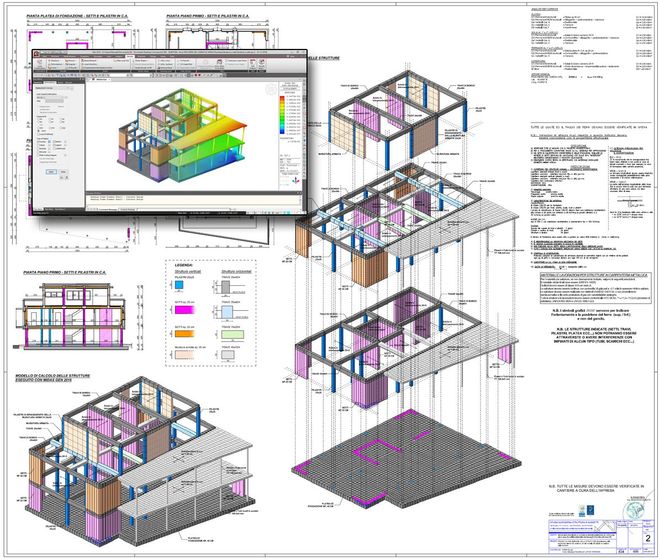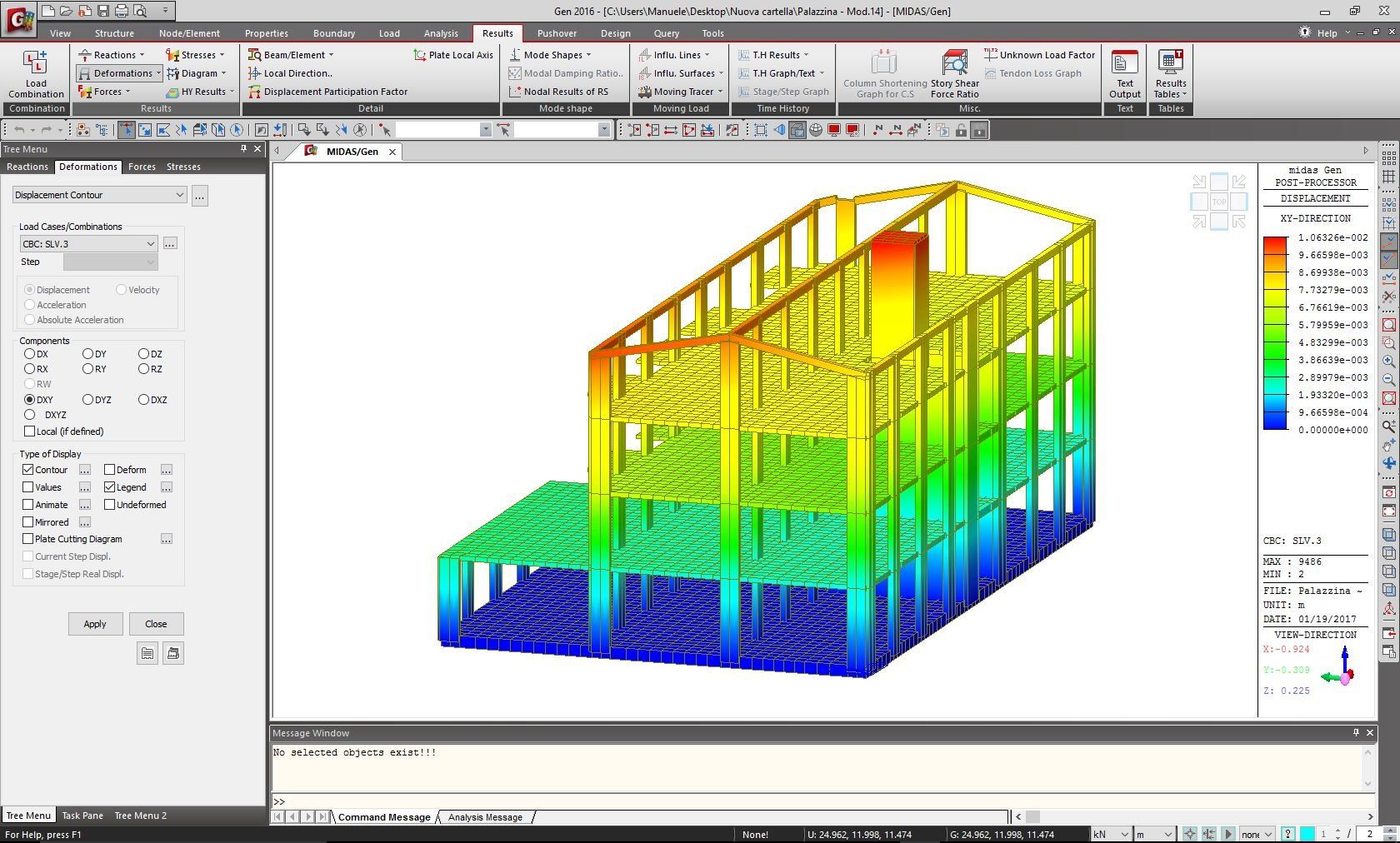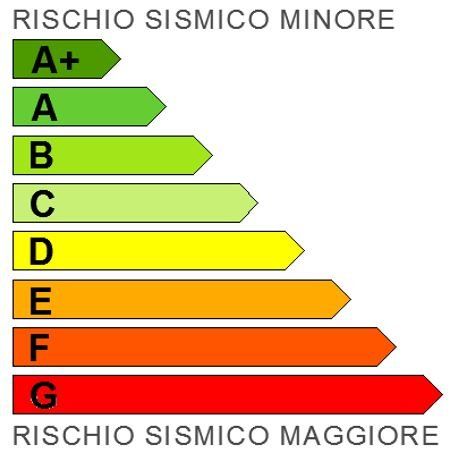The terms 'structural analysis' and 'structural calculation' indicate the different tools and numerical or computer techniques developed to interpret and solve engineering problems.
Structural Design
Studio Ingegneria Massetti specialises in structural design. We treat, study and analyse:
- Design of new structures in seismic zones, using different technologies and structural concepts. These include buildings with reinforced concrete structures, buildings with metal structures, masonry buildings or reinforced masonry, and wooden roofing.
- Analysis of finite element structures by means of static or dynamic analysis in a linear or non-linear field.
- Verification of the seismic vulnerability of existing buildings.
- Projects for the improvement and seismic adaptation of existing buildings, including the restoration and consolidation of historic buildings.
- Projects for the coordination of investigations and diagnostics of structures and construction material, through on-site surveys and laboratory tests.
Structural analysis
Seismic vulnerability
A building's seismic vulnerability is its predisposition to suffer damage or a collapse when a seismic event occurs. The higher the vulnerability, the more damage there will be. This depends on:
- Typology, including height;
- Design;
- Quality of materials, degradation, or cracks;
- Method of construction, such as lack of attention to details, to mutual connections of components, to hammering, etc;
- Maintenance of the structure and deterioration over time.
Vulnerability can be identified by simplifying the seismic-resistant structure. This is done with a calculation model that performs specialized analyses, providing, in probabilistic terms, possible damage according to the intensity of the earthquake. The results of these analyses depend on the position and the seismic area of the building, as well as on the materials used and their quality, the construction characteristics, and the state of maintenance, as mentioned above.
Vulnerability assessments are particularly important in Italy, where most of the heritage buildings have not been fitted with anti-seismic measures. We know this through the seismic vulnerability index or seismic risk indicator (IRS / IS-V). This is the relationship between a building's resistance capacity according to the Technical Standard, the maximum ground accelerations (PGA - Peak ground acceleration), and the demand required by an earthquake: IS-V = PGAC / PGAD. If the outcome of the verification meets the minimum requirements, as defined in the Technical Standards for the site where the building is located, then the indicator is greater than or equal to 1. If there is a negative result, the value will be less than 1. As part of its security assessments, the IRS gives us an idea of the limits of a building but is not exhaustive. There may be, for example, vulnerabilities in secondary elements which also need to be verified.
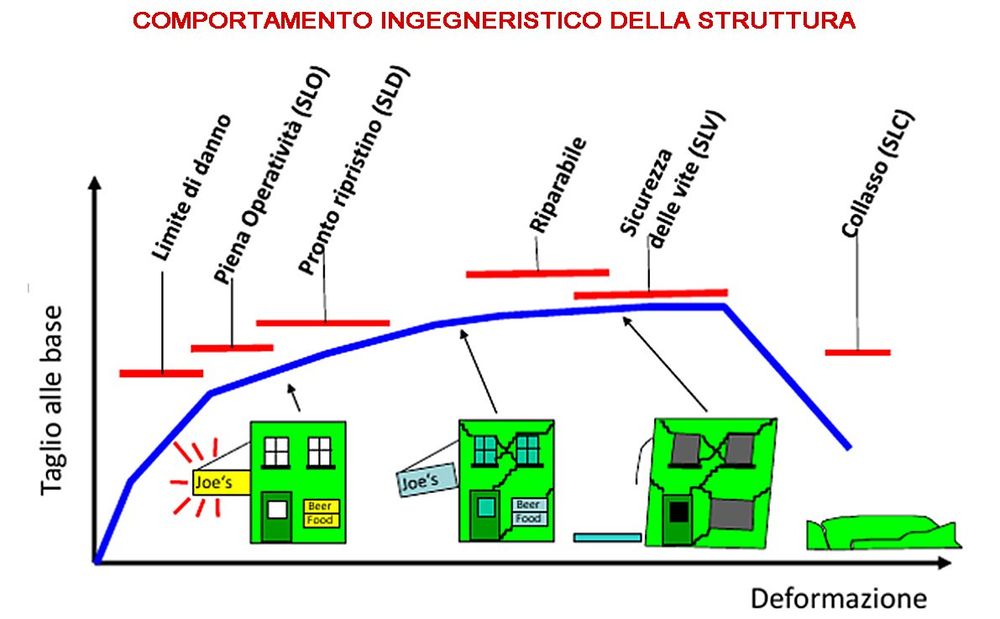
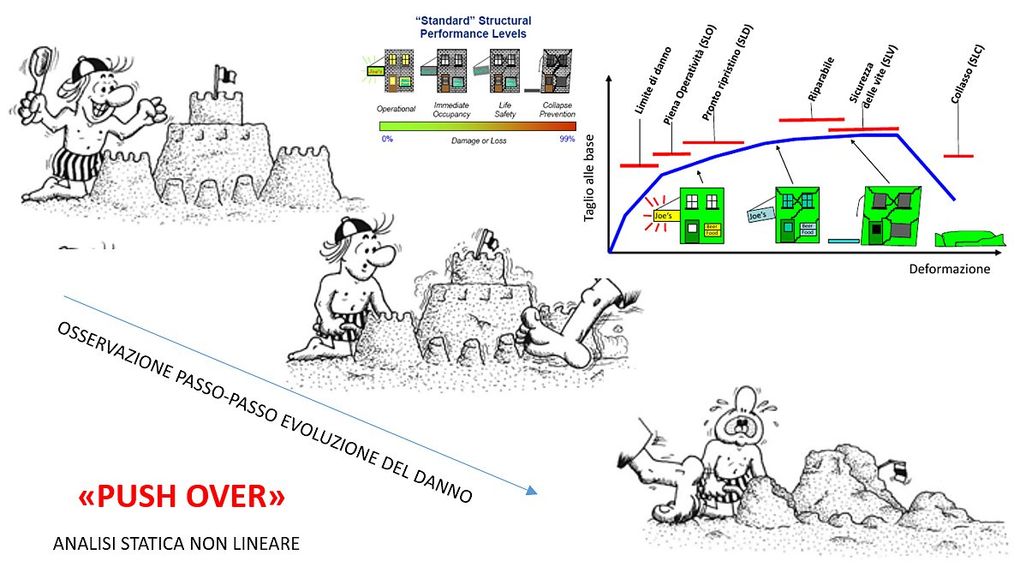
Classes of seismic risk
Historic buildings - palaces/churches
When we work with historical buildings, the first step is to investigate the structure from the material point of view, studying the chemical properties through on-site investigations and laboratory tests. This tells us a lot about their mechanical resistance. Diagnostics may be more or less in-depth according to the tests carried out, but also depend on the documents available (original projects, data on the structure's carpentry and on the materials used, historical data related to changes over time, etc). The level of knowledge determines what measures will be applied to the materials. With historic buildings, not all intervention techniques are allowed; it is necessary to pay attention to invasive and reversible aspects, as well as to the compatibility of the materials used for consolidation. Two other fundamental aspects are the effectiveness of the intervention and the safety of the structure. The consolidation of a historic building is usually subject to verification by a competent body, generally the Superintendence of Archaeology, Fine Arts, and Landscape, which verifies its compatibility in all ways previously described.
Other services
- Architectural design
- Feasibility studies
- Construction supervision
- Testing
- Technical reports
- Legal technical advice




